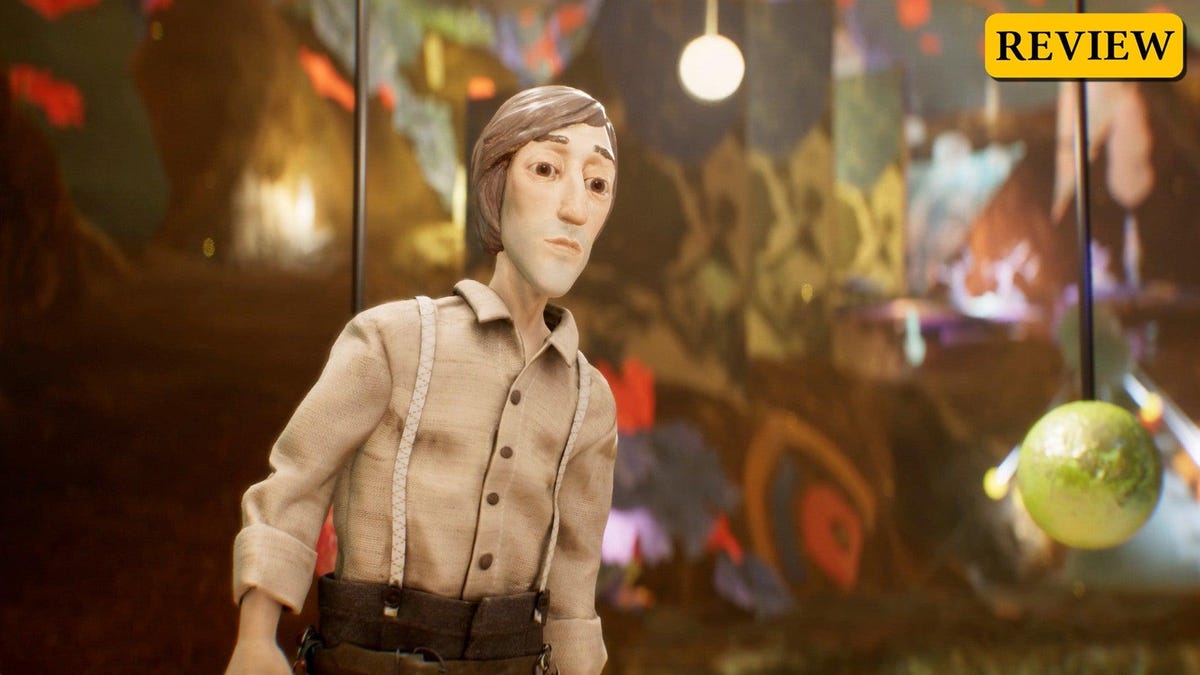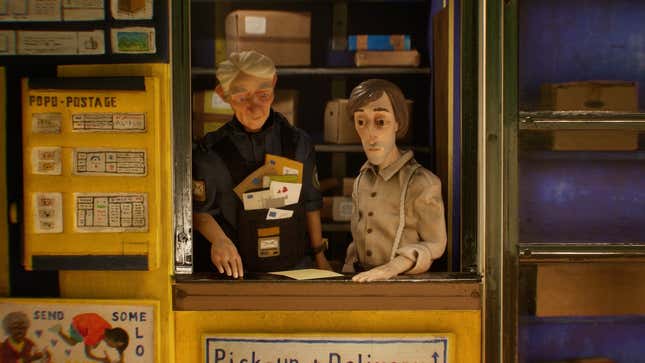
As I play through the sci-fi adventure that is Harold Halibut, I am often reminded of walking through an aquarium. It’s partially because the game’s gorgeous environments are submerged in, but it’s also because I feel a childlike frustration at the events unfolding in front of me. Like a kid tapping the glass in hopes of making the colorful fish break out of their mundane swimming pattern, I want to tap the glass of Harold Halibut in hopes that the characters within its world will finally do something of interest. But the game never fully breaks out of its mundanity.
Harold Halibut has been a long-time coming. The first game from developer Slow Bros. took 14 years to develop, owed entirely to its handcrafted claymation art style. It’s a striking visual style, but the characters that inhabit the claymation world are never given as much care as the painstaking manner in which they’re rendered.
Under the sea
Harold Halibut players are put in the shoes of the titular Harold, a lab assistant (who mostly gets treated like a janitor) aboard the Fedora, a space ship now submerged under water on a poisonous planet. 250 years ago, worried that the Cold War would destroy earth entirely, the All Water Corporation built the Fedora as a life raft meant to preserve humanity on a new planet. While being stuck under water wasn’t the original plan, the citizens of the Fedora have carved out a simple life for themselves. At least it’s better than getting nuked into oblivion on Earth, right?
Harold is something of an all-around handyman. In the opening moments of the game (which takes roughly a dozen hours to complete) you go through the motions of Harold’s life, which includes walking around the Fedora to accomplish tasks like cleaning graffiti and replacing filters for people that are smarter and seem incredibly inconvenienced by your presence. Harold is, sadly, treated as the village idiot.
Despite the sci-fi setting that may remind players of BioShock’s under-water city Rapture, Harold Halibut is quick to show you that there is nothing weird going on here—people live boring lives, just underwater. You’re reminded of this mundanity by having to complete boring chores, until the game drops several plot points that signal an imminent change in the status quo. First, a probe sent to the surface of the planet receives a message from Earth. Turns out the Cold War did not end in a nuclear apocalypse and everybody is living normal lives. Second, Harold discovers an alien creature in the water filtration system. Finally, the Fedora is running out of energy, which puts a clock on how long they can all survive. Now things have gotten interesting.
Going through the motions

Or so you’d think. Despite information that should send the entire Fedora population into an existential crisis, life just goes on. While some of the cast are attempting to find solutions to these new problems, there is no sense of urgency. For Harold, people continue to ask him to run errands that force the player to walk back and forth across the same handful of locations ad nauseam. These are still mundane tasks like picking up medicine and delivering it and then backtracking to tell the pharmacist that you delivered the medicine. This is one of Harold Halibut’s most frustrating aspects—there is a lack of challenge or gameplay variety to keep the player involved. Beyond walking so very slowly (even while holding the run button) from cutscene to cutscene the game offers little for the player to do.
Harold Halibut is ostensibly an adventure game, but it lacks the genre’s use of puzzles to give the player more to do. Harold, and by extension the player, are just there as a tool for others. What might work in a different non-interactive medium (say a claymation movie, perhaps) becomes an unexciting slog as a video game. There are few locations and not much to do. Half of Double Fine’s Broken Age had a similarly constricted space ship setting, but it was full of puzzles that ensured the player was interested in revisiting old locations. Harold Halibut lacks that. This wouldn’t be as much of an issue if the game’s characters were interesting enough to propel the player through the story, but the writing of Harold Halibut constantly falls flat. It’s also delivered in voice overs that are just as stilted as Harold’s slow gait.
While you can see the promise of an interesting tapestry of lives on the Fedora, the game itself never delivers. Characters are one note, and the conflicts they have with each other are constantly tied up in neat little bows that paint every character as near-perfect. Even the corporate stooges of All Water are doing the wrong things for the right reasons. The game constantly gestures at more complicated themes but never goes near them, playing it safe instead. It plays it safe. Even when it does try to upend the status quo in a late-game surprise, it is only timidly dipping its toes into deeper water, too afraid to dive in head first.
Handmade spectacle
Harold Halibut may sound like a game that doesn’t take many risks, but it does—just not in its narrative or gameplay. Its artstyle is its riskiest feature, a claymation spectacle in which Slow Bros. handcrafted every character, prop, and environment and scanned them into the game world in a process called photogrammetry. It gives Harold Halibut a one-of-a-kind look with a physical computer rendered graphics lack. You can tell these were all crafted by a human hand, and it’s phenomenal to behold. Discovering a new character or environment is a joy just because you can see new ways the claymation world was crafted.
Unfortunately, because of Harold Halibut’s repetitive gameplay, and limited characters and locations, the visual spectacle quickly loses its luster. . In just a few hours with the game, I saw all it had to offer, and then it became as mundane as life on the Fedora must be. It’s regrettable that this beautiful world doesn’t contain a story that makes you want to live inside of it for as long as possible, because what Slow Bros. has accomplished is unquestionably a stunning visual achievement.
Harold Halibut shoots for the moon, and (despite missing its target) lands amongst the stars. In an industry that progressively takes fewer and fewer risks, it is a breath of fresh air to see Slow Bros. take such a big swing. I hope this game encourages more developers to push visual and artistic boundaries in the future. Even if Harold Halibut isn’t for me, I have to respect its vision.
.








